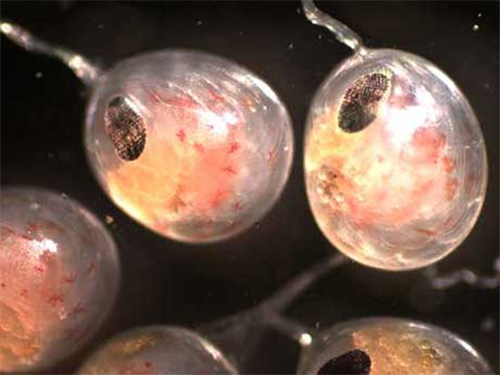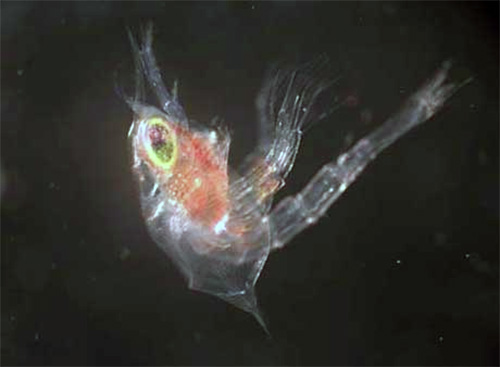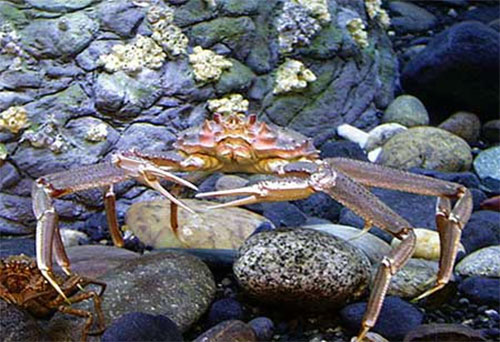
New Studies Raise Questions About Crabs Adaptability
March 4, 2016
“A lot has to do with the stage in life that a crab is exposed to more acidic conditions (lower pH levels) than normal,” said Chris Long, NOAA Fisheries Alaska Fisheries Science Center. “For instance, the ocean environment that larval Tanner crabs live in is highly dynamic, with variable levels of acidity. At this age, tanner crabs seem able to tolerate shifts in pH. But if these animals are exposed to more acidic conditions at the embryo stage, they may be less able to tolerate changes in ocean acidification as larvae.”
Blue king crab eyed embryos; the large black patch is the eye; yellow region is yolk; red splotches are chromatophores (color cells).
In a separate study on blue king crabs, scientists also saw slower growth rates and higher mortality in juveniles exposed to more acidic conditions. Blue king crabs have supported an important fishery in the Bering Sea. However, their populations around the Pribilof Islands and St. Matthew Island regions have fluctuated dramatically. This suggests that environmental conditions play a big role in the number of young crabs that actually grow to maturity and can be caught by the commercial fishery. Changes in ocean acidification may make it even more difficult for these populations to recover from recent low levels. These two studies on Tanner and blue king crabs add to a growing volume of work by NOAA Fisheries Alaska Fisheries Science Center and the University of Washington.
Blue king crab larva right after hatching.
University of Washington scientist André Punt used these projections to evaluate effects on the lucrative commercial fisheries that rely on these crab species for their livelihoods. “Our projections suggest that unless crab adapt to changing pH, we will be seeing lower catches in 40-50 years and the need for more effort to catch the crab that are out there,” said Punt. So the big unanswered question is then if the change in pH over decades is gradual, can crabs adapt?
An adult Tanner crab.
For Tanner crabs, even at the lowest pH tested, pH 7.5, some larvae, embryos and juveniles survived and grew, indicating variability in individual tolerances for low pH and the potential for natural selection to allow adaptation to acidified conditions. “For blue king crabs, we saw over the course of our year-long study that juveniles became more tolerant of more acidic conditions the longer they were exposed. The longer they were in acidified conditions, the less likely they were to die,” said Long. “This suggests that they are able to alter their body chemistry to adapt to acidified conditions. Their ability to adapt will really depend on how fast pH conditions change.”
Edited by Mary Kauffman, SitNews
Source of News:
|
||


